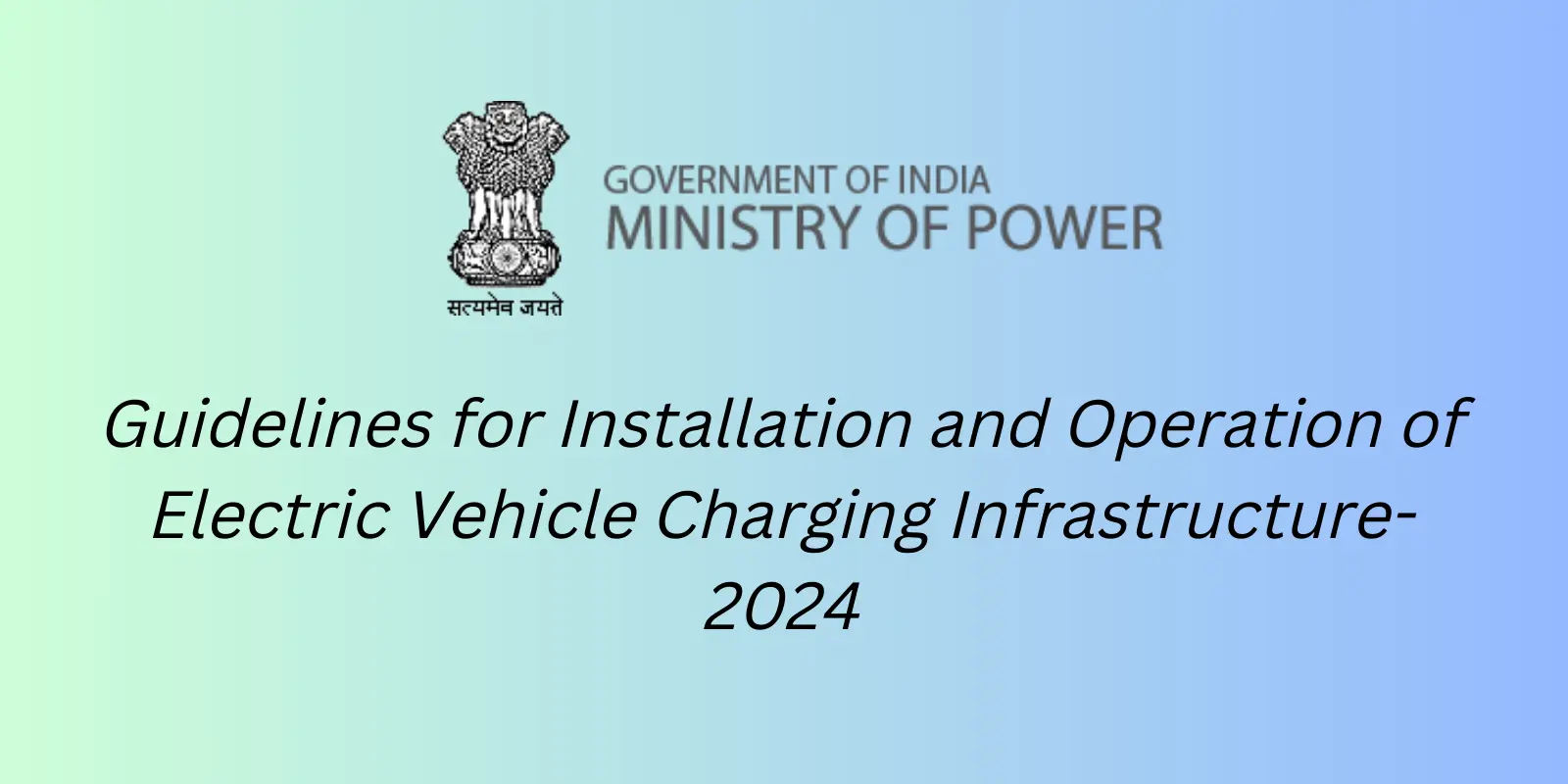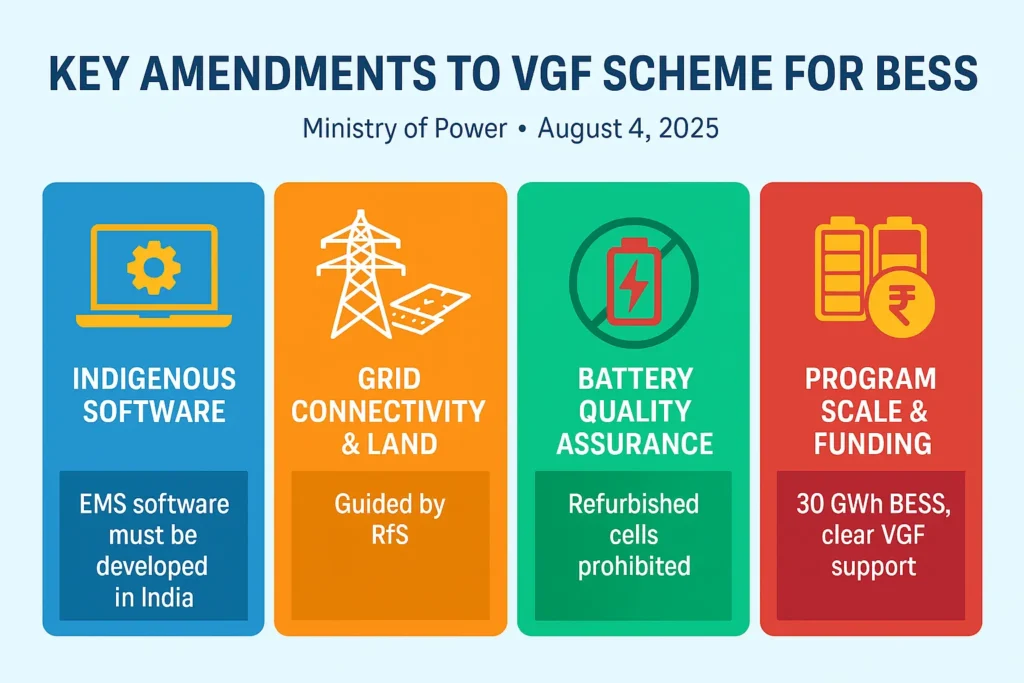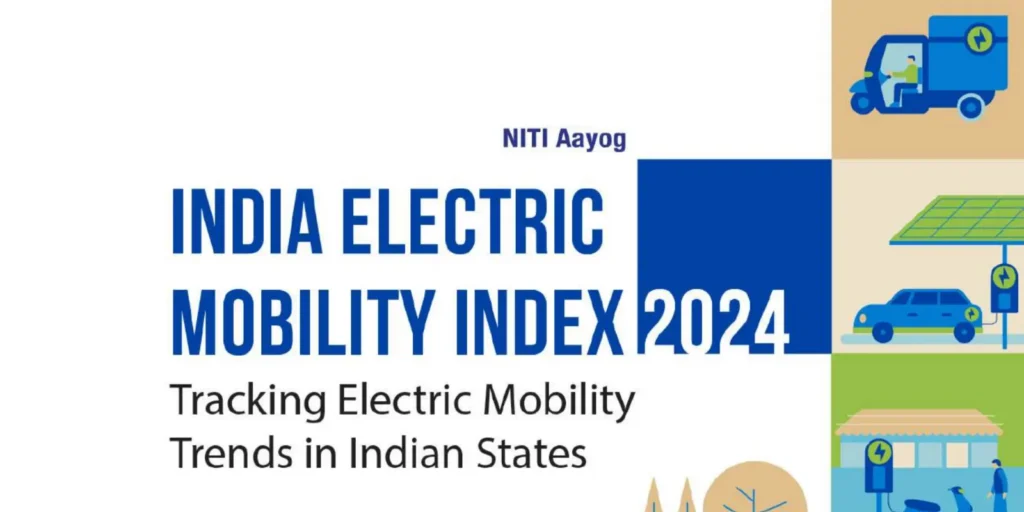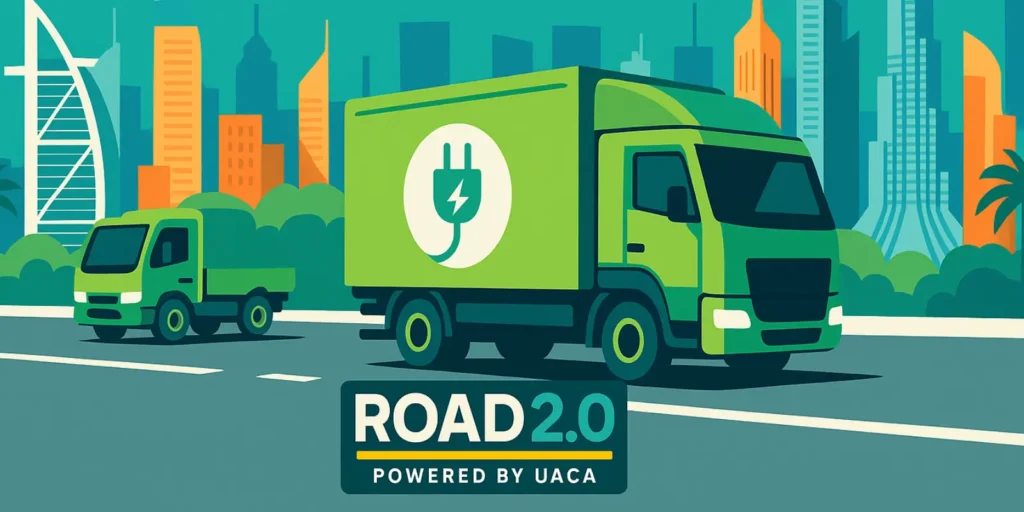
17 September 2024, New Delhi | The Union Government of India issued revised guidelines 2024 for EV Charging Stations in India. These revised set of guidelines are called as Guidelines for Installation and Operation of Electric Vehicle Charging Infrastructure-2024 and aim to drive EV adoption in country by making charging stations safe, reliable and accessible.
Previous Guidelines by MoP
| Date | Guidelines | Reference |
|---|---|---|
| 07/11/2022 | Amendment in Guidelines to Charging Infrastructure for Electric Vehicles (EV) | Read Now |
| 14/01/2022 | Charging Infrastructure for EV’s – Consolidated Guidelines & Standards | Read Now |
| 08/06/2020 | Amendment in Revised Guidelines | Download PDF |
| 01/10/2019 | Revised Guidelines for EV Charging | Read Now |
| 14/12/2018 | Charging Infrastructure for Electric Vehicles – Guidelines and Standards | Download PDF |
EV Charging guidelines 2024
1. Short Title:
These guidelines shall be called “Guidelines for Installation and Operation of Electric Vehicle Charging Infrastructure-2024”.
2. Applicability:
These guidelines shall be applicable to
- Manufacturers, Owners and Operators of EV Charging Infrastructure located
- In private parking spaces,
- In semi restricted places like office buildings, educational institutions, hospitals, Group Housing Societies, e-bus depots and
- In public places like commercial complexes, railway stations, petrol pumps, airports, metro stations, shopping arcades, municipal parking and
- On highways&expressways.
- Power utilities and Central and State agencies.
3. Objectives:
- To drive EV adoption by making charging stationssafe, reliable and accessible.
- To develop a robust charging network across theNation initially prioritising the essential locations.
- To increase the viability of charging stations by facilitating public land at promotional rates, expeditious approval of electricity connections and standardising pricing of power supply.
- To encourage charging of EVs during solar hours.
- To prepare the electricity grid to handle the increased demand from EV charging.
4. Definitions:
- Captive Charging Station (CCS) means an exclusive facility for charging of EVs owned or controlled by the owner of charging station or governed by him under a business agreement. Example: Government Departments, Corporate entities, Bus Depots, fleet owners etc.
- Central Nodal Agency (CNA) means a CentralAgency for the rollout of Public EV Charging Infrastructure across the country.
- Charge Point Operator (CPO) means any individual/entity operating the EV Charging Station.
- Charger Management System (CMS) means a system used by fleet operators, charge point operators, and others, to monitor and optimize electric vehicle charging operations.
- Community Charging Station means semi-public charging station installed at Group Housing Societies or other residential accommodations where only residents or authorized visitors can get their EV charged.
- Electric Vehicle means any vehicle propelled, partly or wholly, by an electric motor drawing current from a rechargeable storage battery, or other portable energy storage devices or other self-generating electric source, as defined by Central Electricity Authority (CEA) in Measures relating to Safety and Electric Supply” regulations 2023, as amended from time to time.
- Electric Vehicle Charging Infrastructure (EVCI) is a network of charging stations catering to diverse EV charging requirement and includes components such as EVSE, connection to DISCOM’s supply system including electricity meter, Power Management System for energy optimization, energy distribution, grid stability and renewables integration, Communication network to assist data exchange in real time and remotely manage EV charging stations, cables, connectors, RFID tags, software applications, circuit breakers, solar panels (if connected), civil work, smart meter, transformer, etc.
- Electric Vehicle Charging Station: Premises having any one or more EVSEs or combination thereof, with or without supporting upstream infrastructure or amenitiesas specified in subsequent sections of these guidelines.
- Electric Vehicle Supply Equipment (EVSE) means an element in Electric Vehicle Charging Infrastructure (EVCI) that supplies electric energy for recharging the battery of electric vehicles as defined by Central Electricity Authority (CEA) in Measures relating to Safety and Electric Supply” regulations 2023, as amended from time to time.
- Group Housing Society (GHS) means a building unit constructed or to be constructed with one or more floors having more than two dwelling units having common service facilities where land is owned jointly (as in the case of co-operative societies or the public agencies, such as local authorities or housing boards, etc.) and the construction is undertaken by one Agency, as defined in Model Building Bye-Laws 2016, as amended from time to time.
- Network Service Provider (NSP) with respect to any electronic record is an intermediary which receives, stores or transmits or provides any service with respect to that record. This includes telecom service providers, internet service providers, web-hosting service providers, search engines, online payment sites, online-auction sites, online-market places and cyber cafes.
- Open Access means non-discriminatory provision for use of transmission lines or distribution system or associated facilities with such lines or systems by any licensee or consumer or a person engaged in generation in accordance with the regulations specified by the Appropriate Commission.
- Open Automated Demand Response (Open ADR) is an open, highly secure, and two-way information exchange model and Smart Grid standard to standardize, automate, and simplify Demand Response (DR) and Distributed Energy Resources (DER) to enable utilities and aggregators to cost-effectively manage growing energy demand & decentralized energy production, and customers to control their energy future.
- Open Charge Point Interface (OCPI) means a communication protocol that supports information exchange between multiple network service providers (NSPs) and charge point operators to enable automated roaming between public charging networks for the ease of EV charging.
- Open Charge Point Protocol (OCPP) means an open protocol used for communication between EVSE and the Charger Management system.
- Public Charging Station (PCS) means EV charging station where any electric vehicle can get its battery recharged, without access restriction.
- Resident Welfare Association(RWA) means an association comprising all the property owners within a Co-operative Group Housing Society, Multi storied Building, Residential Colony, or a similar body registered with the State Government, as defined in Electricity (Rights of Consumers) Rules, 2020 as amended from time to time.
- Smart Charging is a way to optimize the charging process according to distribution grid constraints, utilization of renewable energy sources and customer preference. This helps reducing transformer overloading requirement for enhancing capability of grid, mitigating voltage fluctuation in grids having high penetration of renewable energy sources. Smart charging includes bi-directional vehicle to grid integration.
- State Nodal Agency (SNA) means an agency designated by StateGovernment for rollout of Public EV Charging Infrastructure in the state.
- Unified Energy Interface (UEI) is a standardand interoperable network based on open source Beckn Protocol, which facilitates interoperability among charging networks, flexible demand response, grid services and cloud storage.
- Vehicle to Grid (V2G) means a set of technologies which facilitates drawing unused electrical energy from electric vehicles into the grid. V2G can supply electricity to the grid during peak hours. V2G can enable electric vehicles toact as extra power source when weather-dependent renewable energy sources are not available.
General Requirements
- Setting up and operation of EV Charging Stations is a de-licensed activity and anyentity is free to establish EV Charging Infrastructure by adhering to these guidelines.
- Charge Point Operators may apply for an electricity connection for their EV charging stations. The Distribution Licensee must provide the required connection according to the following timelines specified under Electricity (Rights of Consumers) Rules, 2020 as amended from time to time.
| SNO | Area Type | Maximum time period within which distribution licensee shall provide new connection |
|---|---|---|
| 1. | Metropolitan Area | 3 days |
| 2. | Other Municipal Area | 7 days |
| 3. | Rural Area | 15 days |
| 4. | Rural Area having hilly terrain | 30 days |
| 5. | If extension of distribution mains, or commissioning of new substations is required | 90 days |
In case of delay in supplying electricity within the period specified by the appropriate Commission, distribution licensee shall be liable for a penalty as may be determined by the Commission as per Electricity (Rights of Consumers) Rules, 2020 as amended from time to time. To expedite the process, Distribution Licensees must establish a customerfriendly online single window clearance system, following the Standard Operating Procedure and application form outlined in ANNEXURE – III.
- Appropriate Electricity Regulatory Commission must pre-specify connection charges up to 150 kW as perrule 4 (13) of Electricity (Rights of Consumers) Rules, 2020 as amended from time to time.Distribution Licensee must provide Low Tension (LT) connection up to 150 kW for charging stations provided, application for a separate LT electricity connection is made for EV charging station.
- State Nodal Agencies and Municipal Commissioners will conduct a yearly assessment of potential EV charging demand across their geographical area to ensure strategic placement of EV Charging Stations. State Nodal Agency (SNA) shall publish this data for benefit of Charge Point Operator.
- The Ministry of Housing and Urban Affairs (MoHUA) has amended relevant sections of the Model Building Bye-laws (2016) and the Urban and Regional Development Plans Formulation and Implementation Guidelines (URDPFI — 2014) to support the growth of electric mobility.These amendments take into account evolving charging technologies, EVs with different charging needs and have a 20-year vision. Local Development Authorities are encouraged to adopt these revisions and ensure adequate space is allocated for establishing EV charging stations in new buildings and urban development plans.
- Charging Station owner may adopt newer technologies for charging of EVs such as induction charging, pantograph etc. compliant withsafety and connectivity requirements stipulated by CEA and BIS from time to time. (7) Charging stations may also integrate solar energy for their stations.
6. Safety, Functionality and User Experience
- All Electric Vehicle Supply Equipmentshall comply with BIS standards indicated at ANNEXURE — I.
- Safety & Connectivity of Electric Vehicle Supply Equipment requirementsshall be as specified in CEA “Measures relating to Safety and Electric Supply” Regulations 2023 as amended from time to timeand CEA”Technical Standards for Connectivity of the Distributed Generation Resources”Regulation (2013) as amended from time to time.
- Functionality and User Experience requirements specified in ANNEXURE — II of these guidelines.
7. Provision of public land at promotional rates for Public Charging Stations
Initially, Public Charging Stations (PCS) may experience low usage due to the gradual increase in electric vehicles on the road. The combination of high land rent and uncertain future revenue streams can make setting up PCS financially unattractive. Therefore, the following provisions are made to lower the land cost.
- Government/Public entities shall offer land for installation of PCS at a subsidized rate to Government/Public entity. This will be a revenue-sharing model where the land-owning agency receives 1 per kWh of electricity used for charging at the station, to be paid quarterly. The revenue sharing agreement may be initially entered by parties for a period of 10 years. A model revenue sharing agreement is placed at ANNEXURE – IV.
- The Revenue Sharing Model may also be adopted by the public Landowning agency for providing the land to a private entity for installation of Public Charging Stations on bidding basis with floor price of 1 per kWh.
8. Charging Fee
The total fee charged by Charge Point Operators from customers shall comprise the following components: –
- Electricity supply tariff which will be considered as pass through per kWh).
- Service charge as per Clause 10.0 of these guidelines per kWh).
- Land cost which will be pass through as per registered land deed per kWh).
- GST as applicable.
9. Tariff for supply of electricity to EV charging stations
- The tariff for supply of electricity to EV Charging Stations shall be single part and shall not exceed “Average Cost of Supply” till 31stMarch 2028.
- The Distribution Licensee will charge 0.7 times the Average Cost of Supply (ACoS) during solar hours (9:00 AM to 4:00 PM) and 1.3 times ACoS during nonsolar hours (remaining hours of the day).
- Each EV charging station must have separate metering arrangements to accurately record consumption and apply the appropriate tariff.
- Distribution Licensee may provide sub metering for EV charger, behind-the-meter of an existing HT connection.
10. Service charges for EV Charging Stations
The following ceiling limit for service charges (excluding GST & land cost) shall be applicable till 31st March, 2028 for conductive AC/DC charging at PCS & Co EV ChargingStations set upon either public or private land. :-
| S.No. | ChargingType | During Solar Hours (9:00 A.M. – 4:00 P.M.) | During Non-Solar Hours (4:00 P.M. – 9:00 A.M.) |
|---|---|---|---|
| 1. | AC (Slow) | ₹ 3.00 Per Unit | ₹ 4.00 Per Unit |
| 2. | DC (Fast) | ₹ 11.00 Per Unit | ₹ 13.00 Per Unit |
- Central and State governments may offer subsidies for setting up public charging stations.
- Transparent Pricing: EV Charging Stations will prominently display:
- Charging rates per unit.
- Applicable service charges.
- A committee under the Central Electricity Authority (CEA) will recommend service charges from time to time.
11. Charging Station Network
To ensure widespread availability, the following guidelines for Public Charging Station placement may be adopted.
- Density:
- Urban Areas: By FY 2030, there will be at least one charging station within a 1 km x 1 km grid in urban areas as notified by respective state governments.
- Highways: ChargingStations will be located every 20 km on both sides of highways, expressways, and major roads.
- Long-Range & Heavy-Duty EVs: For long-range EVs and heavy-duty vehicles like buses and trucks, a fast-charging station (as per specifications in Clause 12 (7) of these guidelines will be located every 100 km on each side of the designated expressways, highways and major roads. Ideally, these stations will be situated within or near existing public charging stations. Cities/Urban Development Authorities/States may locate these facilities in urban regions within areas such as transport hubs or bus depots.
- Flexibility: Additional charging stations, both standard and fast-charging, can be installed beyond the minimum requirements.
- Infrastructure Planning: State and UT governments will utilize these density/distance guidelines to:
- Secure land for public charging stations.
- Prioritize installation of supporting infrastructure like transformers and feeders for electricity distribution.
- Implement these measures even in cases without central or state subsidies.
- Partnerships: The government may prioritize existing fuel retail outlets operated by Oil Marketing Companies (OMCs) for installing public EV charging stations (meeting safety and connectivity standards as in ANNEXURE — I and ANNEXURE – II) to achieve the desired network coverage.
- OMCs with charging facilities should prominently advertise this on their signage to inform EV owners.
- Directional signs on nearby roads leading to charging stations will further enhance accessibility.
- Additional Locations: EVCharging stations can also be installed at:
- Group Housing Societies including Residential Societies
- Shopping malls
- Office complexes
- Restaurants and Hotels
- Educational institutions f. Hospitals
These charging stations should allow charging for visitor vehicles and be strategically located near entrances, exits, or well-lit elevator areas for optimal accessibility.
12. Public Charging Stations — General Requirements
- EV Charger Specifications: EV Chargers shall be as per the Indian Standards mentioned at ANNEXURE — I.For small size EVs such as two wheelers, three wheelers, quadri-cycles, four wheelers etc. Charge Point Operators will preferably provide a minimum 7.4 kW AC or DC EV chargers.
- User Convenience:
- Online Booking (Optional): Public Charging Stations may partner with network service providers for convenient selection of EVchargers and remote booking of charging slots.
- Real-Time Information: Public Charging Stations will display user-friendly information including:
- a. Location
- b. EV Charger types (AC/DC, kW capacity)
- Number of available EV chargers
- d. Charging rates
- e. Any additional fees
- f. Information specified by the Central Nodal Agency (CNA)
- Communication Protocols: Open Standards are recommended. Public Charge Point Operators (CPOs) may adopt open communication protocols like UEI, OCPP, OCPI or open ADR for efficient communication with DISCOMs regarding demand response.The protocols must be compliant to extant provisions of cyber security.
- Payment Options: Flexible Payment Methods must be offered. Public Charging Stations will offer (prepaid/postpaid) payment options, potentially with time-based rates and discounts during solar hours.
- Electricity Connections:
- (i) Distribution Licensee Connection: Owner of Public Charging Stations can apply for electricity connections with their Distribution Licensee following the process outlined in ANNEXURE — Ill of these guidelines.
- (ii) Open Access Option:Owner of the PublicCharging Station can also choose to obtain electricity through open access within 15 days of submission of a complete application. This option involves paying a surcharge (not exceeding 20% of the tariff applicable to the category of the consumers seeking open access as per Tariff Policy 2016), transmission charges and wheeling charges. No additional fee will be applied beyond these.
- (iii) Owner of PublicCharging Station may explore potential integration of renewable energy sources (example solar) in their charging stations.
- Station Amenities (Optional): Larger Public EV Charging stations i.e. stations with more than 10 EV chargers for four-wheeled vehicles may offer additional amenities like washrooms, drinking water, and covered waiting areas for customers.They may also be equipped with surveillance cameras with at least one month storage.
- Fast Charging for Long-Range and Heavy-Duty EVs: Public Charging Stations equipped for fast charging long-range EVs and heavy-duty vehicles (like trucks and buses) must meet the following specifications:
- (i) High-Power EV Chargers: At least two EV chargers with a minimum capacity of 240 kW each, complying with Power Levels 3 or 4 as defined in ANNEXURE —I.
- (ii) Liquid Cooled Cables (Optional):PublicCharging Stations may also choose to provide Liquid Cooled Cables for high-speed charging of vehicles with compatible fluid-cooled batteries (a feature found in some long-range EVs).
13. Information about the database of Public Charging Stations:
- The Bureau of Energy Efficiency (BEE) has createdNational online database of all public charging stations across India. This will help EV owners to easily locate nearby Publiccharging stations.
- Public Charge Point Operators (CPOs) are advised to adopt open communication standards/protocols for data sharing like Unified Energy Interface (UEI), Open Charge Point Protocol (OCPP), Open Charge Point Interface (OCPI) & Open Automated Demand Response (open ADR).
- Centralized Platform:
- a. National Database: BEE, in collaboration with State Nodal Agencies (SNAs), will maintain a databaseof public charging stations nationwide.
- b. Open APIs for third party developers: BEE will provide open APIs to third party developer for integrating value added services to the National database. Open APIs shall be restricted to non-confidential information.
- c. Standardized Information: A common data format using minimal fields will ensure consistent information across all EV charging stations.
- Simple Registration: Public Charge Point Operators will register their EV charging stations on theNational database using minimal fields.
- Energy Data Sharing: PublicCharge Point Operators will share annual data on energy sold per EV charger on National database.
- Centralized Platform:
- Bureau of Energy Efficiency will provide awareness using the EV Yatra Portal.
14. Charging at Office/Commercial buildings
- New Connection: Building/Office owner can request for a separate metered connection from Distribution Licensee with a dedicated EV charging tariff. This will be installed within the timelines specified in Electricity (Rights of Consumers) Rules, 2020 as amended from time to time.
- Existing Connections: Building/Office owner may use their existing electricity connections to charge employee EVs at the workplace.
- Increased Load: If necessary, Building/Office owner can apply to their electricity distribution licensee for a higher power load to accommodate EV charging stations.
- EV Charger Selection: In consultation with the distribution licensee, commercial building owners can choose the types and number of workplace EV chargers to install based on employee needs.
15. Charging at Residence
- New Connection: Owners can request for a separate metered connection from Distribution Licensee with a dedicated EV charging tariff. This shall be granted within the timelines specified in Electricity (Rights of Consumers) Rules, 2020 as amended from time to time.
- Existing Connection: Owners can use their existing electricity connection to charge their EVs at home.
- Increased Load: If EV charging station requires more power than the current sanctioned load, the owner will apply to the distribution licensee for seeking increase in the sanction load. (4) Charging Rates: Domestic electricity rates will apply to charging EVs at home.
16. Community Charging for Residents
- New Connection: Resident Welfare Association, Group Housing Society, an owner of a flat, house in an Association, any other consumer within a GHS, can request for a separate metered connection from Distribution Licensee with a dedicated EV charging tariff. This will be installed within the timelines specified in Electricity (Rights of Consumers) Rules, 2020 as amended from time to time.
- Group Housing Societies (GHS): In consultation with the distribution licensee, Residential Welfare Associations (Society) can establish EV charging stations within their premises.
- Choice of EV Chargers: Residents can decide on the types and number of community EVchargers to be installed.
- Visitor Charging: Community stations can be equipped to allow charging for authorized visitor vehicles.
- Private Charging Points: Residents can install private EVcharging stations in their designated parking spaces.The Distribution Licensee will ensure electricity supply through the resident’s existing meter or a separate sub-meter depending on consumer’s choice.
- Increased Load: If community EV charging stations requires more power than the current sanctioned load, then GHS will apply to the distribution licensee for seeking increase in the sanctioned load.
- Community Charging Rates: GHS will determine the charging fees for community charging based on the applicable electricity tariff and service ceiling limits laid down under these guidelines.
17. Charging Stations for E-Buses Electricity Connections:
- Distribution Licensee Connection: Bus depot operators can apply for electricity connections with their Distribution Licensee, following the process outlined in ANNEXURE – Ill of these guidelines.
- Open Access Option: E-Bus depots can also choose to obtain electricity through open access within 15 days of submitting a complete application. This option involves paying a surcharge (not exceeding 20% of the tariff applicable to the category of the consumers seeking open accessas per Tariff Policy 2016), transmission charges, and wheeling charges. No additional fees will be applied beyond these.
- State Transport Undertakings may explore potential integration of renewable energy sources (example solar) in bus depots. Charging Station Equipment for E-Buses:
- High-PowerEV Chargers: E-Bus depots must install EVchargers with a minimum capacity of 240 kW, complying with Power Level 3 or 4 as defined in ANNEXURE -I.
- Liquid Cooled Cables (Optional): For depots with e-buses equipped with liquidcooled batteries (common in some long-range models), appropriate cables for high-speed charging of such batteries can be installed at theEV charging stations, if needed.
18. Implementation of Vehicle to Grid
- EV fleets act as vast electricity storages, flexible loads and decentralised energy resources capable of providing flexibility to support power system operations. V2G may be enabled as per the requirements of respective Distribution Licensee.
- Tariff for electricity under V2G operation will be as determined by the appropriate Electricity Regulatory Commission.
- Public Charge Point Operators may maximise amount of smart charging instead of uncontrolled/unmanaged charging in consultation with aggregators/distribution licensee.
- Public Charge Point Operators may compliment EV charging stations with storages and facilitate bi-directional flow of electricity between grid and electric vehicles.
- Vehicle and EVSE OEMs may explore capabilities of V2G enabled electric vehicles and EV chargers to allow grid services while protecting the vehicle batteries against overcharging and discharging.
19. Charging station as Solar Carport
Solar carport is a dual purpose, stand-alone structure that provides shelter for vehicles, whilst generating clean, renewable energy from the sun for use on-site including electric vehicle charging. Solar carports can be installed independently or integrated with grid. Solar carport with Battery Storage can be charged with solar energy and store energy onsite. This stored energy can subsequently be utilized to charge electric vehicles, providing an independent and sustainable alternative to traditional grid-dependent charging.
20. Implementation Mechanism
- Central Nodal Agency: The Bureau of Energy Efficiency (BEE) will act as the Central Nodal Authority to monitor the implementation of these guidelines. All relevant agencies, including electricity distribution companies (DISCOMs), the Central Electricity Authority (CEA), and state government agencies, will be expected to cooperate and provide necessary support to the BEE.
- State Nodal Agencies: Each state will designate a State Nodal Agency (SNA) responsible for coordinating with DISCOMs to facilitate electricity connections for public, community, workplace, and e-bus depot charging stations.State governments have the flexibility to choose their Nodal Agency. The state DISCOMs will be the default option. However, states can also designate State Public Sector Undertakings (SPSU), Urban local bodies (ULBs) or Urban Development Authorities. A state level steering committee chaired by Secretary in-charge of Energy and comprising secretaries of Transport, Municipal Administration and Urban Development, such other members as required shall be constituted to plan and monitor the implementation of EV Charging Infrastructure at the state level.
- Progress Review- Steering Committee: A central steering committee chaired by the Additional Secretary of the Ministry of Power including members from relevant ministries, representative from states,BEE and CEA will review the implementation of these guidelines.
Download in PDF
Download Guidelines for Installation and Operation of Electric Vehicle Charging Infrastructure-2024



